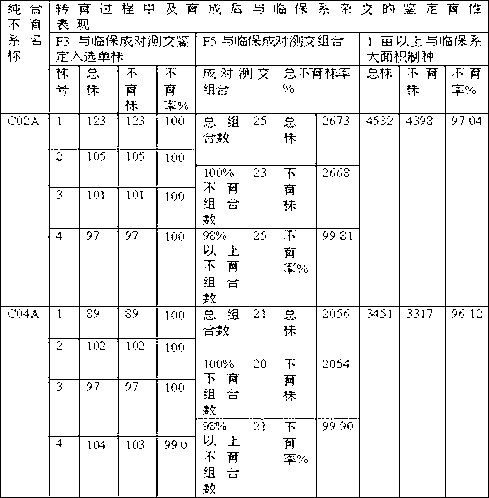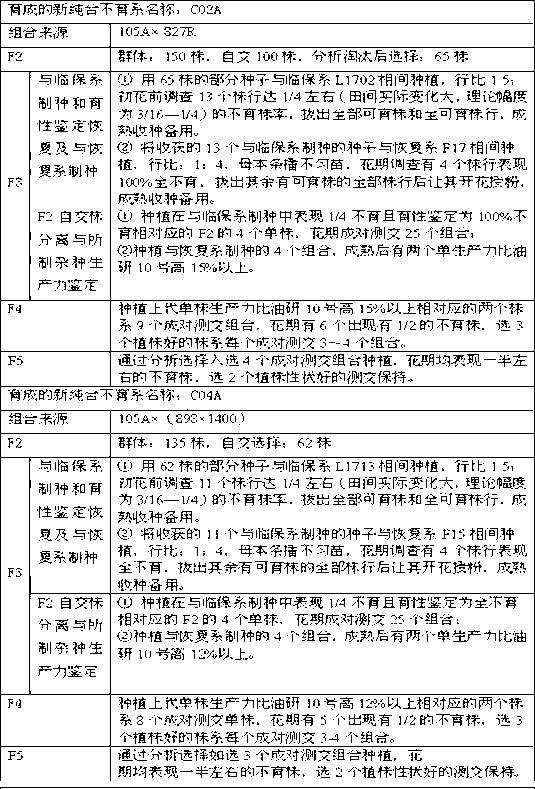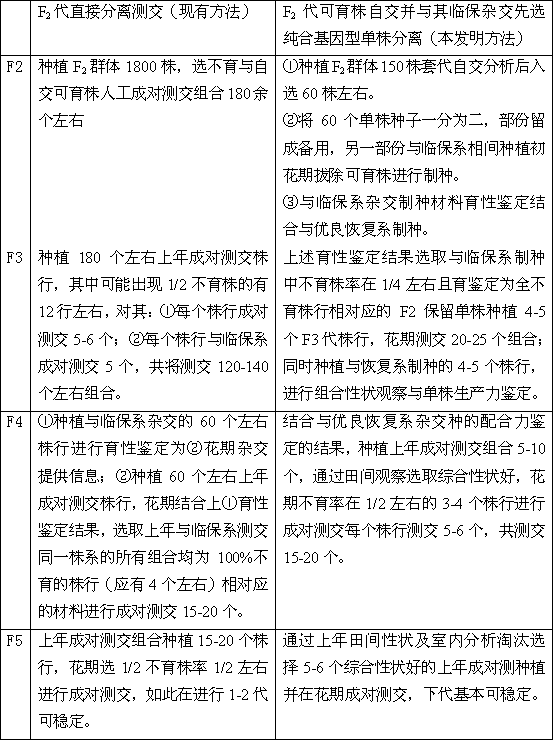Selection breeding method of new homozygous sterile line of brassica napus
A Brassica napus homozygous technology, applied in botany equipment and methods, applications, plant gene improvement, etc., can solve the problems of inoperable transgenic materials and heavy workload
- Summary
- Abstract
- Description
- Claims
- Application Information
AI Technical Summary
Problems solved by technology
Method used
Image
Examples
Embodiment 1
[0037] Example 1: In the spring of 2005, the pure and sterile line 105A was crossed with 827R, wherein the 105A line is a stable pure and sterile material isolated from the recessive genic male sterile three-line hybrid Wanyou 19, but the high yield of the material Sex, quality and economic traits are poor. 827R is derived from the fertile line in the female parent 8227AB of Youyan No. 10. After segregation and selection, there is no material with stable fertility in segregation of sterile plants. Excellent, especially the oil content is as high as 48% to 51%. The transgenic material was selected in Sinan (Guiyang) and Weining for a total of 7 to 8 planting seasons (Table 2), and a new homozygous sterile line C02A was bred in 2009. Its fertility After several generations of test crossing and hybrid seed production, the combination with the stable Temporary Line all showed the characteristics of complete sterility (Table 3).
example 2
[0038] Example 2: In 2007, the pure and sterile line 105A was crossed with 898×1400, and the 105A line was a stable pure and sterile material isolated from the recessive genetic male sterile three-line hybrid Wanyou 19, but the high yield of the material 898 in 898×1400 comes from the excellent selection line of Zhongshuang 4, and 1400 is an excellent selection line of Huyou 17. This material has high yield, good economic properties, high quality, and resistance Preferably, the oil content is around 45%. The transgenic material was selected for 7-8 planting seasons in Sinan (Guiyang) and Weining (Table 2), and a homozygous male sterile line C04A was bred in 2011. The hybrid combinations of line preservation test cross and hybrid seed production all showed the characteristics of total sterility (Table 3).
[0039] Table 2 Breeding process
[0040]
[0041] Table 3 Fertility identification performance of the cross between homozygous sterile line and temporary insurance lin...
PUM
 Login to View More
Login to View More Abstract
Description
Claims
Application Information
 Login to View More
Login to View More - R&D Engineer
- R&D Manager
- IP Professional
- Industry Leading Data Capabilities
- Powerful AI technology
- Patent DNA Extraction
Browse by: Latest US Patents, China's latest patents, Technical Efficacy Thesaurus, Application Domain, Technology Topic, Popular Technical Reports.
© 2024 PatSnap. All rights reserved.Legal|Privacy policy|Modern Slavery Act Transparency Statement|Sitemap|About US| Contact US: help@patsnap.com










